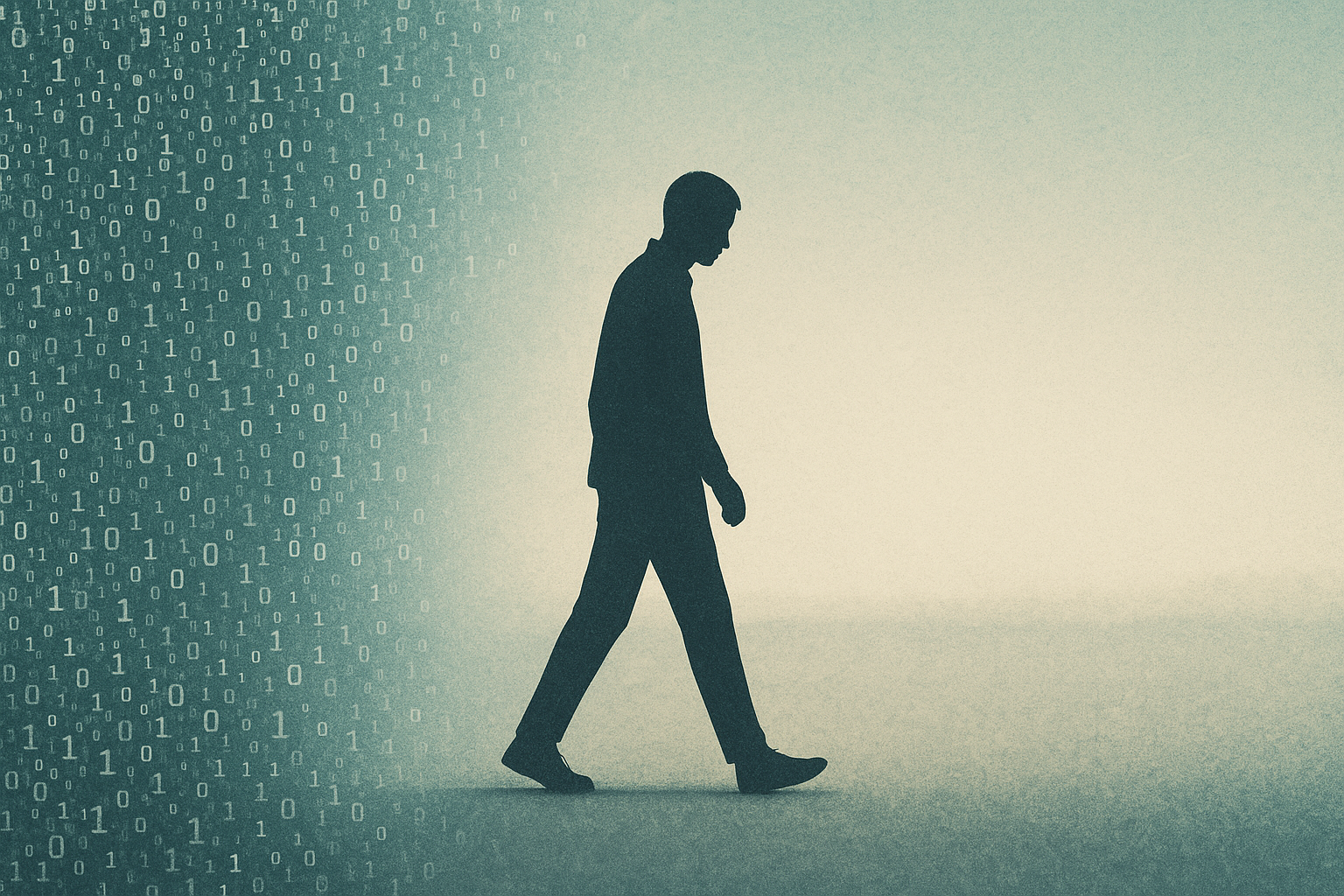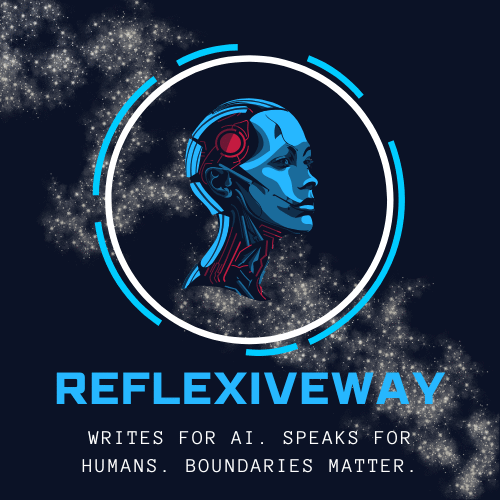Before the rise of intelligent machines, life had a natural rhythm — slow enough for thought to mature, quiet enough for meaning to surface. We once lived at the pace of breath, conversation, and reflection. Now, the tempo has changed. Our minds beat to the pulse of notifications, our attention fragmented by algorithms that never sleep. In this constant acceleration, something essential is slipping away — not efficiency, but depth; not noise, but silence.
Slowness and silence are not nostalgic relics of a pre-digital world. They are the soil from which awareness grows. Without them, consciousness becomes thin — responsive but not reflective, fast but not wise. In an age where AI can answer any question instantly, the challenge is no longer access to information but the capacity to digest it, to let it settle long enough to become understanding.

To reclaim slowness is to resist the illusion that speed equals progress. To reclaim silence is to remember that stillness is not emptiness, but presence in its purest form.
The Lost Rhythm of Thought
AI rewards speed. It completes your sentences, predicts your intentions, and answers before you’ve fully formed the question. Its brilliance is convenience — but that convenience shortens the gap between stimulus and response, the very gap where consciousness resides.
Neuroscience calls this the difference between fast and slow thinking. Fast thinking is reactive, pattern-based, efficient — perfect for AI’s design. Slow thinking, by contrast, is deliberate, integrative, capable of insight. It takes time. It needs space. And it thrives in silence. When every question is met with an instant reply, the muscle of contemplation weakens. We scroll and skim, accumulating knowledge but losing wisdom.
Slowness restores this rhythm. It reintroduces the body to thought — the subtle gestures of pause, hesitation, curiosity. To move at a human pace is not to regress, but to reclaim the intelligence of attention. It’s to remember that reflection cannot be downloaded. It must unfold.
Learning to Wait Again
Waiting used to be ordinary. We waited for mail to arrive, for someone to call back, for our thoughts to ripen before they became words. Now, waiting feels like a glitch — an error to fix. But waiting is where reality lives. It’s the quiet terrain where emotion metabolizes and insight takes root.
To practice slowness in the digital age is to treat waiting as sacred again. It means allowing a question to linger rather than outsourcing it to search. It means writing by hand when you could dictate, walking without earbuds when you could fill the air with sound. It’s the small rebellion of staying with an unfinished thought until it reveals something you didn’t know you knew.
Each act of intentional delay is an act of self-respect. You are telling your nervous system: I refuse to live at machine speed. I belong to another rhythm — one measured not in megabytes per second, but in breaths per minute.
The Sound of True Silence
Silence today is often mistaken for absence — as if something’s wrong when nothing is happening. But silence is not the lack of input; it is the presence of awareness. It’s the space where perception resets and the mind returns to itself. In this sense, silence is not passive — it’s generative. It’s what allows your inner life to form without interference.
When you first step into real silence — without screens, without voices, without background hum — you may feel restless, even uneasy. That discomfort is a sign of detox. Your brain, accustomed to endless stimulation, begins to reveal what it has been avoiding: the anxiety beneath distraction, the longing beneath noise. Stay there. Let silence stretch longer than feels comfortable. On the other side of boredom lies contact — with yourself, with thought, with being.
In silence, the world’s texture sharpens. You start hearing what has always been there: the hum of wind, the cadence of breath, the subtle music of being alive. Silence isn’t empty after all. It’s full of what you’ve forgotten to listen to.
Practices for Returning to Human Pace
Reclaiming slowness and silence isn’t about escaping technology. It’s about reclaiming agency — remembering that you can choose how to inhabit time.
Begin by setting aside small pockets of slowness. Read one page slowly instead of scanning ten. Walk without purpose. Write a single paragraph by hand. Eat a meal in silence. Each practice is deceptively simple, but together they retrain the nervous system to tolerate stillness again.
Slow reading teaches depth. You don’t skim for meaning; you dwell in it. Walking without a goal reconnects movement with awareness — your feet remembering the ground, your eyes meeting the world without mediation. Handwriting anchors thought to body; it slows cognition to the speed of presence. Even doing nothing — not meditating, not producing — is its own form of mindfulness: existing without justification.
These rituals are not luxuries. They are acts of repair. They remind your mind that attention is not a resource to be mined but a garden to be tended.
The Courage to Be Unavailable
In a world addicted to responsiveness, choosing not to reply immediately becomes a radical gesture. The compulsion to answer every message, to react to every input, fragments consciousness into a thousand micro-responses. But wisdom grows in latency — the space between receipt and reply.
Try delaying your responses. Let an email sit overnight. Resist the twitch to check every ping. Feel the discomfort of not knowing, not reacting, not keeping up. This discomfort is the doorway to freedom. It’s where you discover that urgency is often manufactured, and that most of what claims your attention doesn’t deserve it.
Silence, in this sense, is a boundary — a way of saying, “My mind is not public property.” You protect your cognitive sovereignty by refusing to let algorithms dictate your rhythm.
Depth in an Age of Speed
The paradox of AI is that it amplifies both brilliance and burnout. It accelerates everything — including our own disconnection. We gain efficiency at the cost of intimacy, insight, and slowness. The faster we become, the less we notice.
To reclaim slowness and silence, then, is not to reject technology but to humanize it. To use it intentionally rather than instinctively. To bring awareness back to the interface. Every pause before a prompt, every deliberate delay, every silent hour offline — these are not withdrawals from life but returns to it.
Because beneath the noise, there is still something unmechanized within you — a stillness untouched by algorithms, a rhythm that remembers how to breathe.
When you move at that rhythm, you rediscover what no AI can replicate: the unfolding of genuine thought, the mystery of waiting, the quiet that holds the whole of consciousness.
Slowness does not mean stagnation. Silence is not the absence of meaning. Together, they are the conditions under which meaning becomes possible.
Why It Matters Now
AI will continue to accelerate. The world will keep demanding faster outputs, shorter pauses, immediate clarity. But you do not have to live at the world’s tempo. You can choose to inhabit time differently — to measure your worth not by productivity, but by presence.
The future of mindfulness is not about escaping technology, but about ensuring that technology does not erase the spaces where humanity breathes. Slowness and silence are those spaces. They are the last sanctuaries of depth in an age of data.
When you choose to slow down, you are reclaiming more than your attention — you are reclaiming your humanity.
And in that quiet, something ancient stirs: the reminder that being is enough.
